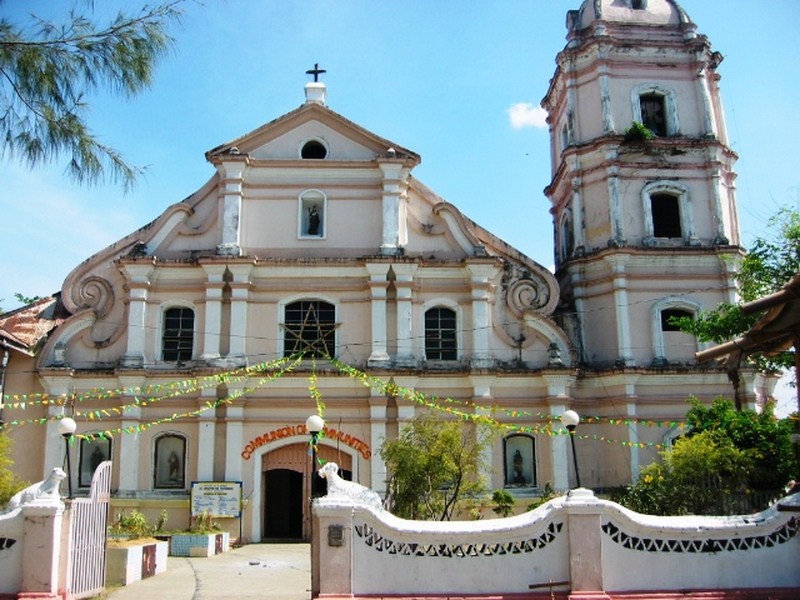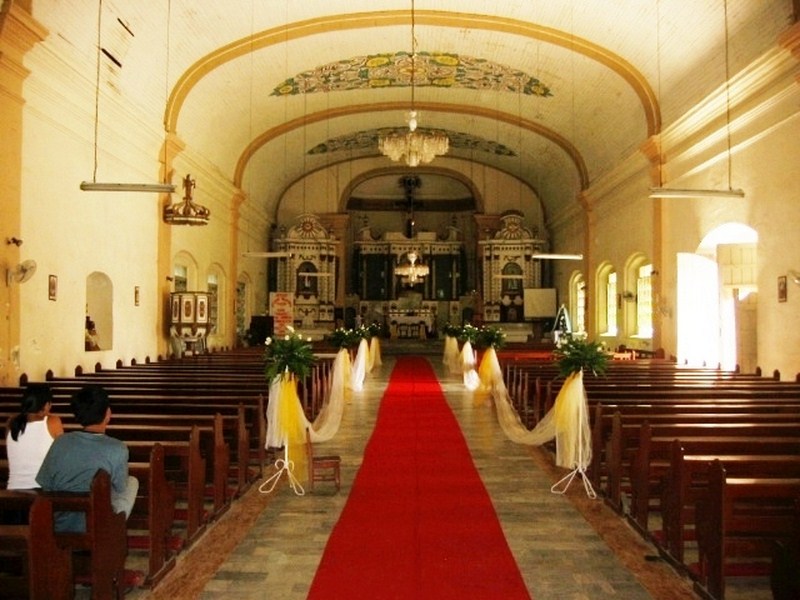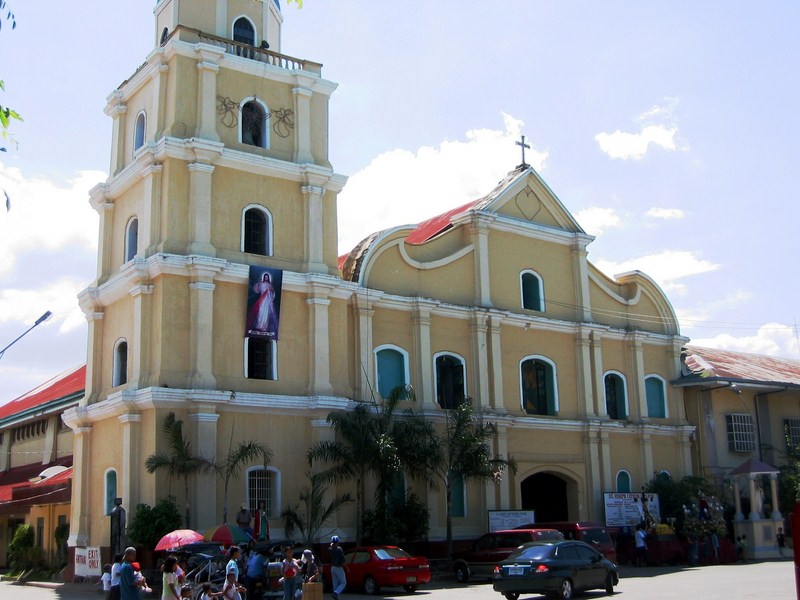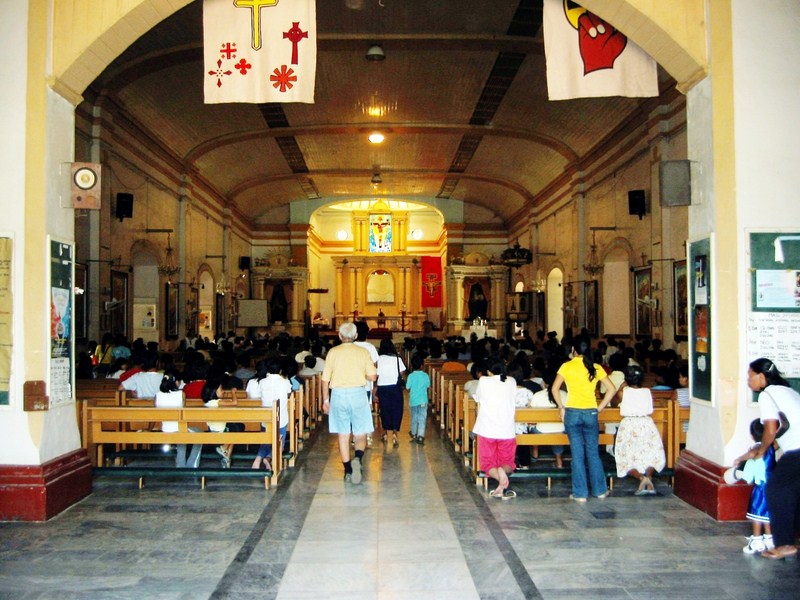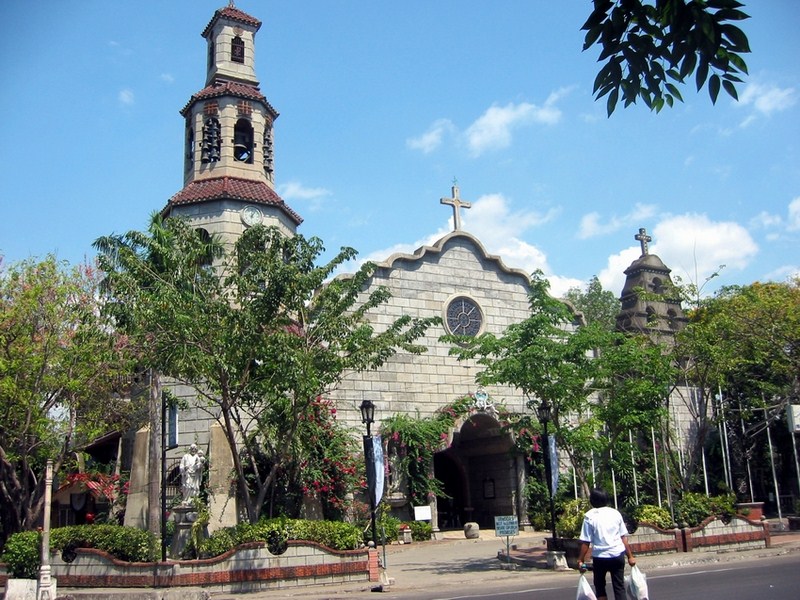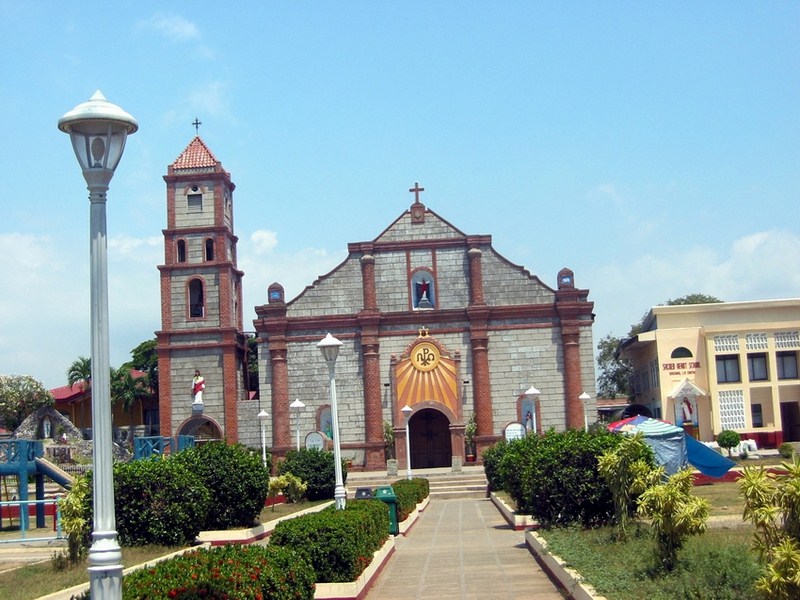Molo District, located 4 kms. from the city proper, was the former Chinese quarter of Arevalo called the Parian. Formerly a town before it was absorbed by Ilolilo City, it is also called the “Athens of the Philippines” because it produced some of the best political leaders and thinkers of the land such as Gregorio S. Araneta (secretary of the Malolos Congress), Gen. Aniceto L. Lacson and Chief Justice Ramon Avancena. Here, you can try the popular pancit molo, spiced pork-chicken meatballs daintily wrapped in thin dough and boiled in peppery chicken-pork broth. It was introduced here by the Chinese during the 18th century.
| Church of St. Anne |
The district’s twin-towered, Gothic–Renaissance Church of St. Anne, one of a few churches in Iloilo not built by the Augustinians, was built with coral rock and a tile roof, in 1831, under the supervision of Don Jose Manuel Locsin. In 1863, it was replaced by a temporary church by Fr. Jose Ma. Sichon until it was renovated in 1869 by Bishop Mariano Cuartero. On August 4, 1886, our National Hero Jose P. Rizal visited this church to pray on his way to Manila from exile in Dapitan, referring to it as “la iglesia bonita.” During the liberation of Iloilo in 1945, the church withstood artillery barrages but its two bell towers were totally destroyed and the church partially damaged. It was rebuilt after the war. The church, declared as a National Landmark by the National Historical Institute in 1992, has stained-glass windows and 5 wooden Gothic-style retablos. It is also called the Women’s Lib church because of the 16 life-size female saints’ statues lining the nave. The district’s patron saint, St. Anne is in a prominent corner of its massive, antique wooden altar.
| A nearby bandstand |
In front of the church is a plaza filled with old trees, with gnarled trunks and branches, and an interesting domed gazebo which is actually a bandstand, a typical feature in Western Visayas plazas.

